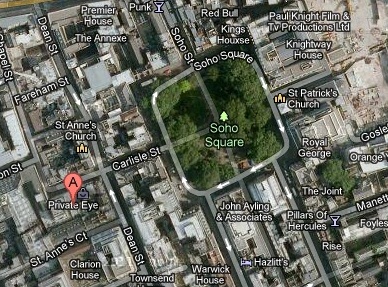Apple Blamed After Google Maps Loses App Crown

Google Maps is no longer the most popular mobile app in the US, having been overtaken by Facebook
Apple’s decision to drop Google Maps from its iOS 6 operating system is being blamed after Google Maps was overtaken by Facebook’s mobile app, to become the most popular mobile app in the United States.
That’s the word from digital analytics firm comScore, which released its latest Mobile Metrix rankings 23 January to report on the top mobile apps in the US marketplace.
Popular Apps
“The latest comScore Mobile Metrix ranking of the top mobile apps by audience shows that Facebook finished the year strong to capture the #1 position from Google Maps,” according to the report, which was written by comScore analyst Andrew Lipsman.
“Of course Apple’s decision to replace Google Maps with Apple Maps on iOS 6 also caused a decline in Google Maps usage in October, which is largely responsible for the position swap. Meanwhile, Google Maps has been clawing its way back the past few months after getting reinstated on iOS 6, so look for the competition for the #1 spot to heat up as we head into 2013.”
 In an interview with eWEEK, Lipsman said that the previous popularity of the Google Maps mobile app means that there’s a good chance that many of those lost users will return now that Google released a new maps app for the popular Apple operating system. At the same time, Facebook is another popular mobile app and it could very well remain in the top spot for awhile, he said.
In an interview with eWEEK, Lipsman said that the previous popularity of the Google Maps mobile app means that there’s a good chance that many of those lost users will return now that Google released a new maps app for the popular Apple operating system. At the same time, Facebook is another popular mobile app and it could very well remain in the top spot for awhile, he said.
“Facebook still has a very positive trajectory” based on the late-year 2012 usage figures, though, and “there’s nothing stopping that momentum. But to me it’s an open question about whether Google will regain its app lead in the US.”
ComScore only began ranking apps usage in March 2012, so the analysts haven’t even compiled a year’s worth of results, said Lipsman. However, the figures are interesting to track because of the increased use and popularity of mobile devices, he said.
“Obviously, there’s been a big platform shift to mobile platforms in general [away from desktop computers],” he said. “We’re in the post-PC paradigm now. Ultimately that means that advertising dollars are going to continue to flow that way,” which makes the mobile app tracking numbers valuable to advertisers and users.
“It provides the context of how many people you can reach,” said Lipsman. “I think its notable anytime there is a shift in position.”
In 2012, a mobile milestone was reached when for the first time, more than 50 percent of mobile users used smartphones instead of basic flip phones, which gives users the ability to explore and utilise mobile apps.
Mobile Domination
Maps apps have been one of the most popular mobile apps for users and Google Maps started 2012 as the most popular mobile app in the United States. The maps app, though, isn’t the only big mobile app for Google, according to the comScore report.
“Despite losing the top position, Google maintains a strong leadership position in the app market with five of the top six ranked apps,” the report states. “Given the ubiquity of various Google services in addition to many being native apps on both iOS and Android, its strength should perhaps not come as a surprise. Other apps rounding out the ranking include Pandora, iTunes, Cooliris and Yahoo! Messenger.”
The Facebook app has also “consistently ranked #1 in terms of mobile app engagement,” according to the report, currently accounting for 23 percent of the time spent on apps by users. Its sister app Instagram owns another 3 percent of the market, the report states. “Various Google apps combine to account for 10 percent of time spent, with Gmail owning the highest individual share at 3 percent. These two leading web companies combine for more than 1 out of every 3 minutes spent on mobile apps.”
In 2013, Lipsman expects that Google and Facebook will wrestle for app supremacy, while the rest of the field will fight for their shares. “If there is one thing we can all bet on, it’s that the market will look very different a year from now,” he wrote.
In December 2012, when the new Google Maps app for iOS 6 was released, it was downloaded by more than 10 million users in the first 48 hours after it became available in Apple’s App Store 13 December, satiating many iOS users who were scrambling for help since Apple’s maps fiasco in September.
Apple had replaced the Google Maps app with its own in-house maps app that was met with derision upon its release, eventually forcing a public apology from company CEO Tim Cook and a restructuring of company management. Apple had dropped the built-in Google Maps app from iOS 6 when the new operating system launched in September, and the move turned out to be a huge embarrassment for Apple when the replacement Apple Maps app left legions of users disappointed with the app’s performance and accuracy.
Many iOS 5 users never even upgraded to iOS 6 when it was released because they’d lose access to the native built-in Google Maps app that was missing.
How much do you know about the iPhone? Take our quiz!
Originally published on eWeek.